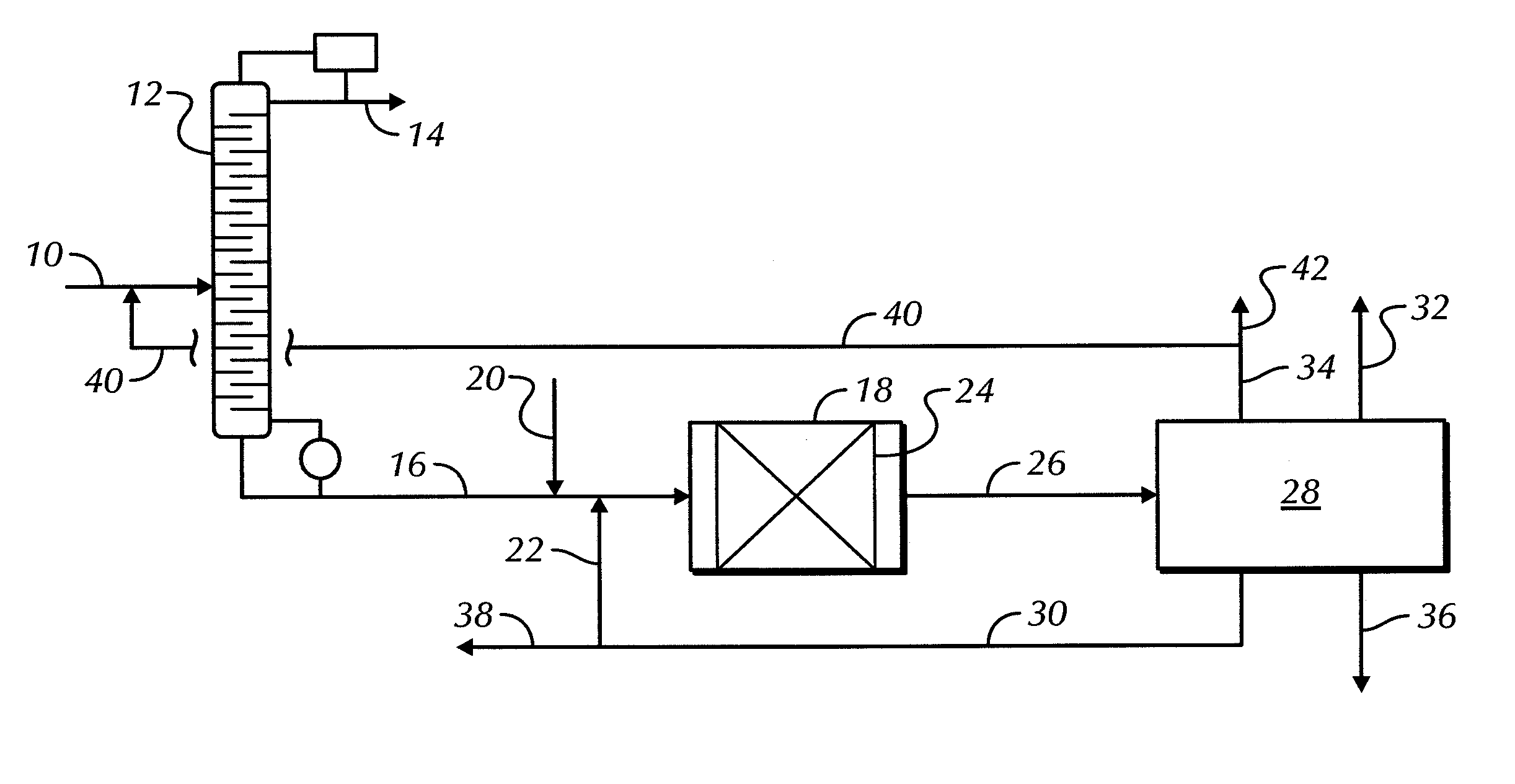Catalyst for metathesis of ethylene and 2-butene and/or double bond isomerization
a technology of ethylene and 2-butene, which is applied in the direction of hydrocarbon preparation catalysts, physical/chemical process catalysts, bulk chemical production, etc., can solve the problems of reducing product yield, limiting the extent of hydroisomerization, and loss of butene feedstock for downstream operations
- Summary
- Abstract
- Description
- Claims
- Application Information
AI Technical Summary
Benefits of technology
Problems solved by technology
Method used
Image
Examples
example 1
[0068]Catalyst MGO-A was prepared by the wet impregnation of 5 mm MgO tablet (MGO) with a colloidal silica solution containing 30 wt % silica (Ludox, AS-30, Aldrich chemicals). After the impregnation, the catalyst was dried at 120° C. for 24 h. The silica content of MGO-A was measured by XRF to be 0.81 wt %. Initial BET surface area was measured after a standard BET degassing at 350° C. for 16 h. Thermal cycling was carried out at 550° C. for 12 h. After each heat treatment the catalyst was cooled to 120° C. for 12 h before the next thermal cycle. FIG. 1 shows the BET surface area decrease for catalyst MGO-A after the thermal aging. Significant reduction in BET surface area is observed after the first thermal cycle. However, after the second thermal cycle, the BET surface area of MGO-A stabilizes. In comparison, the untreated 5 mm MgO tablet (MGO) still continues to lose BET surface area after every cycle, up to the 4th thermal cycle.
example 2
[0069]Catalyst MGO-B was prepared in a similar manner to catalyst MGO-A by the wet impregnation of 5 mm MgO tablet (MGO) with a colloidal silica solution containing 30 wt % silica (Ludox, AS-30, Aldrich chemicals). After the impregnation, the catalyst was dried at 120° C. for 24 h. The silica content MGO-B was measured by XRF to be 0.81 wt %. Initial BET surface area was measured after a standard BET degassing at 350° C. for 16 h. Thermal cycling was carried out at 550° C. for 12 h. After each heat treatment the catalyst was cooled to 120° C. for 12 h before the next thermal cycle. FIG. 1 shows the BET surface area decrease for catalyst X052-L2 after the thermal aging. Significant reduction in BET surface area is observed after the first thermal cycle. However, after the second thermal cycle, the BET surface area of MGO-B stabilizes. In comparison, the untreated 5 mm MgO tablet (MGO) still continues to lose BET surface area after every cycle.
example 3
[0070]Catalyst MGO-C was prepared in a similar manner to examples 1 and 2 by the wet impregnation of 5 mm MgO tablet (MGO) with a colloidal silica solution containing 30 wt % silica (Ludox, AS-30, Aldrich chemicals). After the impregnation, the catalyst was dried at 120° C. for 24 h. The silica content MGO-C was measured by XRF to be 1.14 wt %. Initial BET surface area was measured after a standard BET degassing at 350° C. for 16 h. Thermal cycling was carried out at 550° C. for 12 h. After each heat treatment the catalyst was cooled to 120° C. for 12 h before the next thermal cycle. FIG. 1 shows the BET surface area decrease for catalyst MGO-C after the thermal aging. Significant reduction in BET surface area is observed after the first thermal cycle. However, after the second thermal cycle, the BET surface area of MGO-C stabilizes. In comparison, the untreated 5 mm MgO tablet (MGO) still continues to lose BET surface area after every cycle.
PUM
| Property | Measurement | Unit |
|---|---|---|
| weight % | aaaaa | aaaaa |
| diameter | aaaaa | aaaaa |
| diameter | aaaaa | aaaaa |
Abstract
Description
Claims
Application Information
 Login to View More
Login to View More - R&D
- Intellectual Property
- Life Sciences
- Materials
- Tech Scout
- Unparalleled Data Quality
- Higher Quality Content
- 60% Fewer Hallucinations
Browse by: Latest US Patents, China's latest patents, Technical Efficacy Thesaurus, Application Domain, Technology Topic, Popular Technical Reports.
© 2025 PatSnap. All rights reserved.Legal|Privacy policy|Modern Slavery Act Transparency Statement|Sitemap|About US| Contact US: help@patsnap.com



